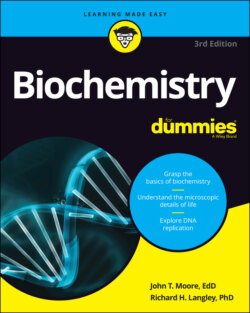Читать книгу Biochemistry For Dummies - John Moore T., Richard Langley H., John T. Moore - Страница 50
Aldehydes and ketones
ОглавлениеAldehydes easily undergo oxidation to carboxylic acids, but ketones don’t undergo mild oxidation. With difficulty (unless you use enzymes, biological catalysts), it’s possible to reduce aldehydes and ketones back to the appropriate alcohols.
Reducing sugars behave as such because of mild oxidation of the carbonyl groups present. Tollens’ test uses silver nitrate, which reacts with a reducing sugar to generate a silver mirror on the inside walls of the container. Both Benedict’s test and Fehling’s test use copper compounds, and a reducing sugar produces a red precipitate with either test. These simple organic qualitative tests find some use in the biochemical tests we describe in Chapters 14 and 15, later in this book.
The carbonyl group of an aldehyde or ketone may interact with an alcohol to form acetals and hemiacetals. Modern terminology only uses the terms acetals and hemiacetals, but you may sometimes see the older terms hemiketal, which is a type of hemiacetal, and ketal, a type of acetal. See Figure 3-6 for an illustration of these compounds.
FIGURE 3-6: Acetals, hemiacetals, hemiketals, and ketals.
The difference between a hemiacetal and a hemiketal is that in a hemiacetal R” = H, but in a hemiketal R” ≠ H. Similarly, the difference between an acetal and a ketal is that in an acetal R” = H, but in a ketal R” ≠ H.
